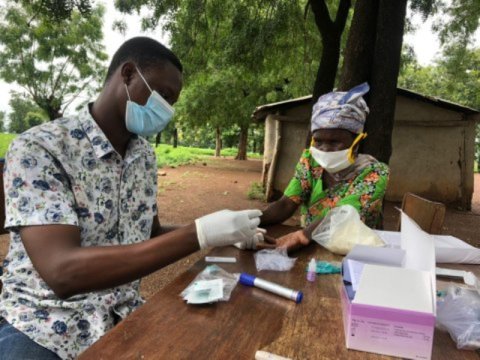Sarah Rowland-Jones: ‘There are reasons to be optimistic this World AIDs Day’

In this blog, Professor Sarah Rowland-Jones explains that although there are certainly some reasons to be optimistic this World AIDS day, there are also some causes for concern buried amongst the UNAIDS data.
As each World AIDS day approaches, UNAIDS releases data on the state of the HIV pandemic collated over the previous year (https://www.unaids.org/en/topic/data). This year, whilst the overall number of people living with HIV infection (PWH) continues to climb, reaching 39 million in 2022, it is encouraging to see that the number of new infections is steadily falling. At the start of the millennium, in the year 2000, an estimated 2.8 million people newly acquired HIV infection, but in 2022 this number has fallen to 1.3 million. The drop in HIV incidence over the past two decades almost certainly reflects the increasing access to anti-retroviral therapy (ART) across the world. By the end of last year, 29.8 million people (76% of all PWH) had access to ART, compared to just 7.7 million in 2010. Taking ART and achieving viral suppression not only benefits the infected person, prolonging their life expectancy to close to normal, but it also has enormous public health benefits through a substantial reduction in the risk of HIV transmission. “Treatment as Prevention” has proved to be by far the most effective HIV prevention strategy, with an efficacy of 96% in clinical trials. The UNAIDS goal of reaching “95-95-95” by 2025, that is, 95% of PWH knowing their diagnosis, 95% of them taking ART and 95% of those achieving viral suppression, has already been achieved by five African countries (Zimbabwe, Eswatini, Rwanda, Botswana and Tanzania) by the end of 2022.
Although there are certainly some reasons to be optimistic this World AIDS day, there are also some causes for concern buried amongst the UNAIDS data. Men are significantly less likely than women to access ART, whilst the group with the lowest ART use consists of young people below 15 years of age – only 57% of an estimated 1.5 million children and younger adolescents were taking ART in 2022.
Children and young people
Why are children and young people so neglected in terms of HIV care? The problem begins with their diagnosis. Whilst most countries have good systems to identify and treat babies born to HIV-infected mothers, there are few established mechanisms to diagnose HIV infection in older children who have slipped through the net. As these vertically-infected children have often been bereaved of one or both parents, they may lack people who will advocate for their health needs – and indeed provide legal consent for HIV testing, which many countries require for the testing of minors.
RSTMH recently awarded the Donald McKay medal to Professor Rashida Ferrand, who will give a lecture on World AIDS day about her work over two decades in Zimbabwe (find out more here). She has led the way in highlighting the health issues of older children and adolescents with perinatal HIV infection (PHIV), who develop an alarming range of comorbidities without prompt diagnosis and treatment. Rashida has shown that up to 30% of children with PHIV have developed a severe form of chronic lung disease affecting the small airways by the age of 10 years. Equally common are striking defects in growth, bone and muscle strength, with one in three children with PHIV being stunted. Other comorbidities described by her team affect the skin, heart muscle and neuro-cognitive function. Although further decline may be arrested by starting treatment with ART, there is little evidence that these conditions, once established, can be reversed. Inevitably these health concerns are highly stigmatising for young people, who are already facing the challenges of growing up with HIV infection against the background of a disrupted family life.
Rashida’s pioneering studies have provided a wealth of clinical observations to characterise the poor health of many young people with PHIV, but she has also conducted trials seeking to identify treatments for the comorbidities she has described. In the BREATHE trial she showed that long-term use of Azithromycin could alleviate exacerbations and reduce hospital admissions in children with chronic lung disease. Just last week in Zimbabwe, early data from the VITALITY trial were reviewed, looking at the potential impact of Vitamin D and Calcium supplementation on growth and immune function in young people with PHIV: these results will be made available early next year.
The UK
In the UK, we continue to see new diagnoses of HIV infection, often with very late presentations reminiscent of the early days of AIDS. However, for most PWH, HIV is no longer the fatal diagnosis that I recall hesitating to impart to patients as a junior doctor in the late 80s, before ART became available. Instead, with good treatment our patients are living well into older age. HIV clinicians are increasingly involved in helping to manage the comorbidities of later life that PWH develop, which usually occur a few years earlier than in their HIV uninfected counterparts. This is a situation which many of us involved in HIV care at the start of the epidemic could not have imagined.
